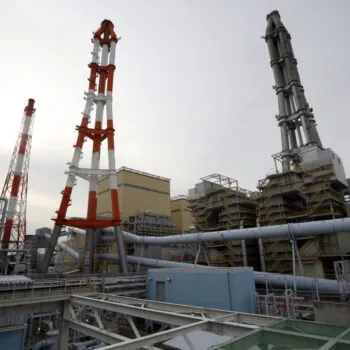In November 2015 the UK government was the first to commit to a national coal phase out policy, which will see coal-fired electricity generation cease by 2025. But just three years earlier coal had provided 40% of electricity generation.[1] Historically, coal had been the dominant fuel in the UK electricity mix, providing 97% of electricity in 1950 and over 70% in the 1980s, as shown in Figure 1.
The subsequent decline in coal generation has been rapid:
- May 2016 saw the first period without coal in the GB electricity mix,[2] lasting for over five hours.
- In a significant milestone, Great Britain saw its first 24-hour period without coal in April 2017.
- The current GB record for coal-free generation now stands at 76 hours.
- Total coal free hours have almost tripled each year since 2016, totaling over 1700 hours to date in 2018.
- Coal provided just 7% of UK electricity in 2017.
- The decline in coal use has coincided with Britain’s renewable sector providing record amounts of electricity, with more than 7.4% coming from solar alone over the summer of 2018.
The UK is now at the forefront of international efforts to find a pathway away from coal as a means of reducing CO2 emissions and air pollution, including through its co-leadership of the Powering Past Coal Alliance (PPCA).
This paper seeks to contribute to this international momentum towards coal phase out through sharing insights on the UK’s experience. It reviews the evolution of commercial drivers and policy incentives that have contributed to the decline of coal in the UK since 2000 and the delivery of the government’s commitment to phase out coal use by 2025. It aims to provide insights that will be of relevance for policy makers and private sector actors alike.
Overall, we find that the decline in UK coal use resulted from a confluence of market drivers and regulatory interventions that have collectively eroded the position of coal in the electricity mix. These elements were not pre-planned but have resulted in coal phase out being recognised as a logical way forward.
Back in 2009 the government recognised that there could be ‘no new coal without carbon capture and storage’. Despite efforts to promote Carbon Capture and Storage (CCS) technology it ultimately became evident that there would be no new coal in the UK, meaning that the existing but ageing power plants would not be replaced on a like-for-like basis.
In parallel, successive UK governments have acted to progressively increase the cost of CO2 emissions. This has combined with stricter EU pollution controls to particularly impact the economics of coal generation. These policies have combined with a reduction in demand for electricity, the growth of renewables, and changes to the relative competitiveness of coal and gas in the electricity market.
The commitment in 2015 to phase out coal by 2025 recognised these shifts and sought to provide an orderly pathway towards retirement for coal power plants that would maintain security of supply while encouraging investment in alternative generation technologies.
In considering the strategies of power plant owners and operators in the UK, our analysis has found that coal plant conversion has been a minority strategy compared to the pursuit of plant closure and potential development of new generating capacity:
- Their preferred option has been continued operation of existing coal power plants, until this becomes uneconomic due to market performance, age of components, and / or the need for significant upgrades to meet environmental regulations.
- The timetables set for compliance with EU pollution control requirements have been essential in providing a pathway for decisions on investment or closure that applies to all generators. At each stage, power plant operators have argued for looser standards and maximum flexibility.
- In the majority of cases, coal power plants have then pursued closure, with consideration of new developments on site.
- Over the past two decades, there has been a shift from consideration of investment in new large-scale coal power generation (and CCS), to Combined Gas Cycle Turbine (CCGT), and now towards specialised waste fuel units, small scale gas generation and also battery storage. This is particularly relevant as the value of providing flexibility to the power system increases compared to the provision of baseload power.
- Only in a minority of cases have existing coal power plants opted for conversion to operate existing power plant assets using alternative fuels.
- Biomass conversion has a mixed record, with technically successful conversions undertaken at Drax, but fires at Ironbridge and Tilbury.
- Subsidies for biomass conversion are now no longer available and there are growing concerns over environmental and climate impacts, making further conversion projects unlikely after the conclusion of the Lynemouth project.
- Conversion to waste pellets is now being proposed for the small power plant at Uskmouth, with claims that this could be a breakthrough technology for existing coal power plants.
- Drax proposes to convert the last two coal units to provide the steam turbines of new CCGT units.
- Alternative uses of existing power plant equipment are now being developed by technology providers (such as reuse of sites for thermal energy storage) and may yet be considered by the remaining UK power plants.
- Over recent years, power plant operators have generally sought to redeploy power plant staff to other roles within the company (including management of site closure and demolition) and / or have offered retirement and retraining packages to workers.
Our analysis of the UK experience points to the central importance of government policy in providing a pathway for reductions in coal use and power plant retirement while enabling individual plant operators to decide on retirement decisions. Timetables for compliance with pollution control regulations have required a response from all power plant operators, while the introduction of effective carbon pricing has provided a market signal and boosted competition between fuels and technologies. The coal phase out commitment brings these elements together and provides clarity on the direction of travel, even ahead of legislation being introduced.
[1] This is very similar to the current level of coal generation in Chile. [2] The Great Britain grid covers England, Scotland and Wales. The electricity grid in Northern Ireland is managed as part of the Single Electricity Market shared with the Republic of Ireland.


